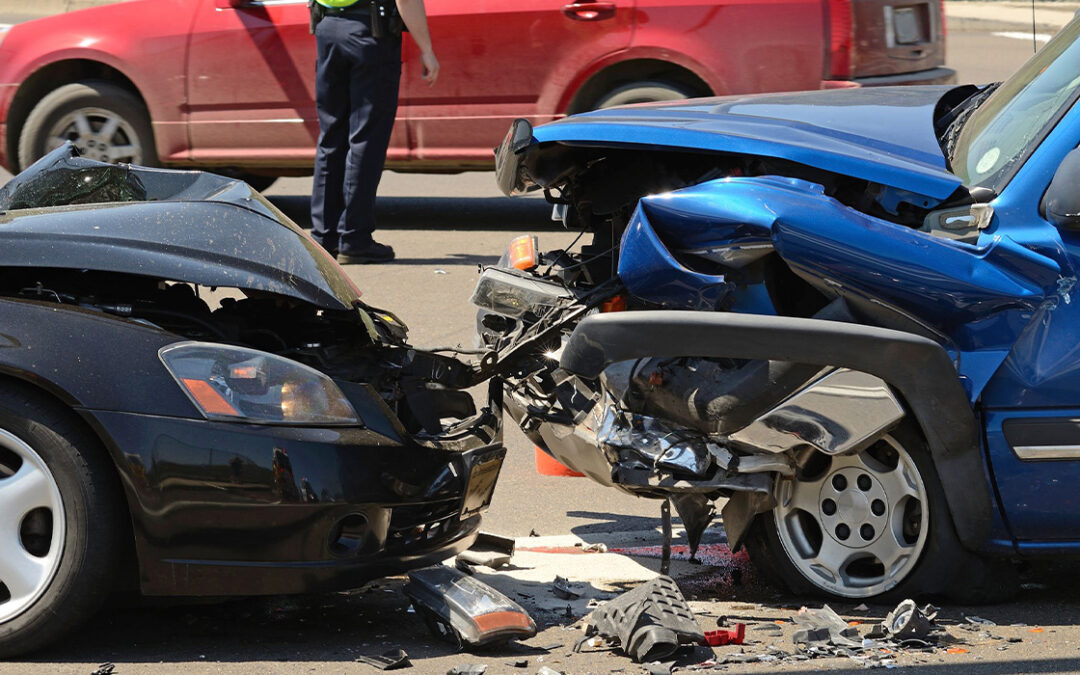
by Jennifer O'Connell | Oct 16, 2019 | Auto Accident, Colorado, Kentucky, Tennessee
Climate Change: A Total Hottie
Let’s assume for a moment that the hoax of climate change is real. Now that we’ve gotten over that little speedbump, raise your hand if you’ve slogged through an airport recently, searching for the least crowded bar serving $14 well drinks, all thanks to Mother Nature’s insistence that your flight be delayed or canceled. Many of us know this tale so well that it’s beginning to feel like Groundhogs Day, but without the benefit of having Bill Murray join us in our plight… not that he’d be exempt. In fact, just this year there have been so many delays and cancellations due to weather that finding an estimated number just for DIA puts Google to the test. It makes sense to most of us that two bomb cyclones in a single year may put a damper on some snow-birding south or snowboarding west. But summer can be just as brutal. “Heat wave” has become common vernacular in parts of the country where the term was previously used for body temps and songs on that dusty vinyl rescued from your mom’s attic, not for transportation. What does 1960’s Motown have to do with travel and climate change? Everything. According to a 2017 article in Forbes magazine, Bombardier CRJ’s can only withstand 118 degrees and larger Boeing jets can’t get much past 125 in order to operate properly. Why? Remember in 3rd grade when you were just learning to write those “check yes or no” notes to your crush while your teacher was desperately trying to teach you how to get an egg into a 2-Liter using just a match? Call her and thank her for explaining to the 8-year-old you why the… ahem… more distinguished version of yourself should start exploring alternatives to air travel. Or call the National Weather Service to inquire as to the accuracy of their early-August report showing near-nationwide heatwaves with temperatures inching closer to forced “stay-cations.”
Road Trip!
Think you’ll out-smart nature and finally see Route 66 from start to finish? Au contraire! In July of this year, the National Weather Service warned of heat waves one week and cold fronts with flash flooding and damaging winds the next. So if the buckled roads don’t squelch your determination, the rushing waters of the Plains States just might. Angry at our wrath-bearing planet? Watch that finger-pointing. All that air transportation we’ve been suffering cancellations is really turn-about finally becoming fair play, according to the New York Times. A June article written by Andy Newman cited scientific conclusions such this: One 2,500-mile passenger’s contribution to emissions melts 32 square feet of Arctic summer sea ice. And a 600-mile drive to an Airbnb with a peaceful spa tub might as well be a giant flame-thrower to the Arctic, melting 90 square feet of ice per person. That’s a chunk the size of our beloved Jeep Unlimiteds. Want to get especially gruesome? A scientist from my Alma mater, University of Tennessee – where the rumor of dead bodies under Neyland Stadium and a body farm just across the river is true – estimated that the average American generates three times the global average of carbon dioxide annually, a lethal dosage to the third rock we live atop.
Cruisin’
Alright, then. No road trips, no sky miles. Let’s all just charge the gangway of the closest cruise ship and take “King of the World” selfies with Celine songs in the background and shuffleboard games taking on SEC vs Big Ten-esque rivalries. That should solve both our transportation and climate problems with one shuffle of the board… is that what it’s called? Except… according to the International Council on Clean Transportation, the most efficient ships sailing the seven seas emit 3 to 4 times more carbon dioxide than those pesky jets. And if you’re still set on shopping at the dockside markets of Jamaica, keep your face mask handy while on board. Particulate counts on cruise ships are comparable to – or worse than – the air quality in Beijing. Alas, how can we safely see the planet and save it at the same time? It seems the experts agree: prioritize, protest, and offset. Prioritize your travel, opting for the less-emitting road trip over the flight, the flight over the cruise. And before kicking those tires and lighting those fires, toss some cash towards offsetting sites to make up for your contribution to polar bear homelessness. Throw your money into methane emanations instead of into the pockets of the worst offenders. It’s the eco-version of “Be kind. Rewind.”

by Queener Law | Oct 27, 2018 | Colorado, Kentucky, Tennessee, Trucking Accident
Electronic Logging Devices Rule Held to be Constitutional
The Owner-Operator Independent Drivers Association filed a constitutional challenge against the electronic logging device rule, and the U.S. Court of Appeals for the 7th Circuit held that the rule is constitutional. It is on track to be fully implemented by Dec. 2017 unless the association appeals it to the Supreme Court of the United States. The regulation will require all large commercial trucks to have electronic devices installed, which will track and record whenever the trucks are in use.
The Lawsuit
The Owner-Operator Independent Drivers Association filed the lawsuit against the Federal Motor Carriers’ Administration on behalf of two truck owners. The drivers alleged that the regulation would violate their constitutional rights to privacy by recording all of their actions while they are driving. The court ruled on Oct. 31, 2016, holding that the electronic logging device mandate does not violate the constitutional right to privacy. The court found that the government’s interest in protecting other motorists outweighed any privacy issues. As a result, the rule is still scheduled to move forward. The plaintiffs have not said whether or not they intend to pursue the matter to the Supreme Court. If they do, and the court agrees to hear the case, it would be a final decision. If they do not appeal it, then the regulation will move forward.
Prior Lawsuit Against Previous ELD Rule Version
In 2010, the FMCSA had attempted to pass a prior regulation requiring electronic logging devices in commercial trucks. At that time, the Owner-Operator Independent Drivers Association filed a lawsuit against the FMCSA on the basis of constitutional privacy concerns. The Appeals Court held that the previous version was unconstitutional because it required the installation of cameras inside of the trucks. The current version does not, allowing it to pass constitutional muster.
Reasoning for the Rule
Large trucks have the potential of causing severe injuries and deaths when they cause truck accidents. This has led the government to institute numerous regulations on the trucking industry. The ELD rule is meant to prevent truck drivers from falsifying their log books and ignoring the hours-of-service rules. Those rules are in place to keep drowsy drivers off of the roads, a problem that a truck accidents attorney frequently sees in injury cases. A truck accidents attorney is hopeful that the new mandate will minimize the number of accidents that happen. Truck accidents often permanently change the quality of lives of their victims.

by Queener Law | Oct 11, 2018 | Auto Accident, Colorado, Kentucky, Tennessee
Why Photos Are Important
Taking pictures immediately after an accident can help preserve crucial evidence of what occurred and which driver was at fault. Photographs can help prove a driver’s liability while also helping convince insurance companies that settling is a wise choice. Pictures can show the angles at which the vehicles collided, the direction of travel, the road and weather conditions, and other relevant information.
After an accident, it is common for people to be in states of shock. They might feel confused and unclear about exactly what happened. Pictures provide crucial information about what caused the accident that people might otherwise fail to notice or forget. Accident reconstructionists can use photographs to determine the relative positions of the vehicles, their speeds, and other contributing factors such as weather conditions or road conditions. This type of information can help present a clear picture of what happened and the liability of the responsible party or parties.
When and How to Take Photos
People who are injured in accidents that they believe were the fault of the other drivers should always try to take pictures immediately after the accidents. If they cannot do so themselves, they should ask someone else to photograph them. The pictures can be taken with a camera that is kept in the car or with a smartphone. The photographs should be taken before either vehicle is moved. People should take photographs of the positions of the cars and the damage to each. They should also take photographs of the other vehicle’s license plate. After getting these pictures, people should take wider pictures of the scene, including any road debris, skid marks, weather, nearby traffic control devices, or speed limit signs. Taking as many pictures as possible is a good idea.
In addition to taking pictures of the accident scene, people should also take photographs of their injuries. This can help show the link between the accident and the injuries if the insurance company attempts to blame the injuries on some intervening cause. People should also try to get the names and contact information of any witnesses who saw the accident so they can be contacted later. Having photographs and witness statements may help people succeed in subsequent claims with insurance companies.

by Queener Law | Aug 16, 2018 | Auto Accident, Colorado, Kentucky, Tennessee
Impact of Loud Music
Listening to loud music can negatively impact a driver’s reaction times and driving abilities. Studies indicate that listening to certain types of music can reduce driver aggression and stress, but tempo, volume, and type may play a significant role in driver performance. If drivers are distracted by loud music, they may fail to react in time to avoid accidents, drift into other lanes and collide with other vehicles or pedestrians, or fail to hear emergency vehicles approaching. Researchers found that listening to music can cause teenage drivers to drive inattentively in a study that was conducted at Ben-Gurion University of the Negev in Israel. In the study, the researchers recruited 85 teen drivers who were ages 17 and 18 to drive specially wired cars along 40-minute routes with driving instructors. During some of the drives, the teens either didn’t listen to music or listened to soundtracks that had been created by the researchers to encourage safe driving. In two of the drives, the teens were told to bring their own playlists of music from home to listen to while they drove.
While the teens reported that they felt better when they drove while listening to their own music, they exhibited multiple problematic driving behaviors. They turned the volume up much higher when they listened to their own music. The driving instructors noted that the teens were likelier to weave in traffic, speed, and drive aggressively when they were listening to their own music. All of the drivers committed three or more driving errors when they listened to their own music at high volumes. The researchers noted that teen drivers are less able to process auditory and visual information simultaneously and that listening to music can be distracting to them. More experienced drivers may not be as distracted by listening to music when they drive. A study demonstrated that older drivers who listen to music while they drive may actually display improved driving behaviors. The researchers in that study posited that drivers might need some form of stimulus while they drive to prevent boredom. While the volume, tempo, and type of music can impact driver response times, distraction levels, and overall performance, it is still unclear which factors affect driving the most.

by Queener Law | Aug 9, 2018 | Colorado, Kentucky, Tennessee, Trucking Accident
What is Relay Trucking?
Relay trucking could be the answer to improving truckers’ work/life balance, preventing accidents, and saving lives. According to the FMCSA and NHTSA, fatigued and overworked drivers cause most commercial truck crashes. The FMCSA requires drivers and carriers to observe implemented hours of service regulations. Even with those limits, drivers often work long shifts with few or no breaks and are under pressure to meet deadlines are more prone to causing accidents. Truckers who engage in point-to-point, full-truckload freight loads have a tough job. They stay with the freight from the time it has been loaded on their rig until they reach the load’s destination. The truckers spend long hours on the road and often days away from their homes and families. The FMCSA requires drivers to take breaks, and their rigs are outfitted with electronic monitoring to keep track of driving and rest hours. However, driver fatigue still happens.
Less-than-full loads use a hub and spoke system where trucks are changed at different hubs along the freight’s journey. But this method is too costly and time-consuming for full loads. However, relay trucking, a new approach suggested by researchers at Oregon State University could improve the quality of life for truckers and save lives. This new method would rely on a large-scaled mixed fleet dispatching system. With relay trucking, the length of a trucker’s full-load trip could be reduced by 66 percent without delaying the delivery process. While a driver gets the rest he needs, another driver along the relay route would take over at the specified relay point and take the load to the next relay point and so on until the destination is reached. Theoretically, this method could be more efficient because the freight is constantly moving, shortening delivery times.
Relay Trucking Can Help Save Lives
According to the IIHS, in 2016, 3,986 people died in large truck accidents. Other drivers or passengers on the road accounted for 66 percent of those deaths. Truckers are required to comply with federal regulations of driving no more than 11 hours at a stretch, but some violate the law and go longer than 11 hours. This increases their risk of causing an accident from driver fatigue. Relay trucking would reduce the number of hours a trucker would drive, reduce driver fatigue and help save lives.

by Queener Law | Jul 20, 2018 | Colorado, Kentucky, Personal Injury, Tennessee
Problematic Plane Inspections
FAA safety inspectors may have improperly approved thousands of aircraft for commercial operation without first reviewing the exemption limitations that could cause them to be prohibited. A whistleblower made a report to the Office of Special Counsel, which requested that the Federal Aviation Administration conduct an investigation. The investigation found that more than 11,000 planes that should have failed their inspections were passed by the inspectors, endangering the public.
According to the whistleblower, the safety inspectors regularly approved planes to fly without reviewing critical safety information about the planes, passing many that should have failed their inspections. Some planes that were passed had rear exit doors that were nearly inaccessible, which could mean that passengers on the plane could be trapped in the case of a crash. Many planes that were passed had expired registrations at the time of their inspections. A number of planes that were no longer registered continued to be operated for flights.
Findings of the FAA
The FAA conducted its investigation and reported its findings to the Office of Special Counsel. It substantiated the report that the planes were passed despite having inaccessible exit doors. According to the FAA, some of the planes had interior doors installed that blocked people’s access to the rear exits. The planes are only permitted to have those interior doors if they have locking mechanisms installed that prevent the doors from becoming closed. However, many of the planes did not have the locking mechanisms installed and were still allowed to fly. The FAA also substantiated the whistleblower’s report that some planes were allowed to continue flying despite having expired registrations in violation of the FAA’s safety regulations.
Corrective Actions
The FAA recommended a number of corrective actions, including the development and implementation of a corrective action plan that includes specific due dates. It also recommended clarifying any exclusions or limitations that are included in the FAA manual to make certain that inspectors look for the locking mechanisms and to fail passenger planes that don’t have them. It also recommended that the registration system is updated and that planes that are expired are not passed.






